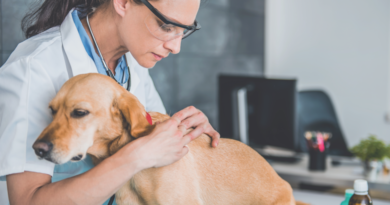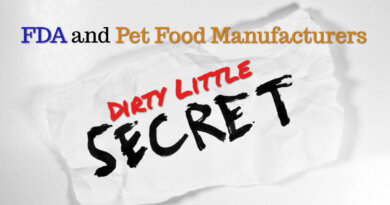Baby Development Stages: The First Year
From helpless newborn to active toddler: It takes just 12 short months for your baby to undergo this incredible transformation. Babies grow and change at an astounding pace, and every month brings new and exciting developments.
New moms and dads often wonder what to expect next and how to know if their baby’s development is on target. Instead of focusing too much on developmental milestones, however, it’s important to remember that babies all develop at their own pace. There’s a fairly wide “window” for when it is normal for a baby to reach a particular developmental stage.
“If your baby reaches one milestone sooner, she may reach another one later, because she’s so busy perfecting the other skill,” says Jennifer Shu, MD, pediatrician and co-author of Heading Home with Your Newborn.
Some babies may say their first word at eight months, while others don’t talk until a little after the one-year mark. And walking may start anytime between nine and 18 months.
Keeping those kinds of variations in mind, here’s what your baby may be doing during each three-month stage of the first year.
During this first development stage, babies’ bodies and brains are learning to live in the outside world. Between birth and three months, your baby may start to:
- Smile. Early on, it will be just to themselves. But within three months, they’ll be smiling in response to your smiles and trying to get you to smile back at them.
- Raise their head and chest when on their tummy.
- Track objects with their eyesand gradually decrease eye crossing.
- Open and shut their hands and bring hands to their mouth.
- Grip objects in their hands.
- Take swipes at or reach for dangling objects, though they usually won’t be able to get them yet.
During these months, babies are really learning to reach out and manipulate the world around them. They’re mastering the use of those amazing tools, their hands. And they’re discovering their voices. From 4 to 6 months old, your baby will probably:
- Roll over from front to back or back to front. Front-to-back usually comes first.
- Babble, making sounds that can sound like real language.
- Laugh.
- Reach out for and grab objects (watch out for your hair), and manipulate toys and other objects with their hands.
- Sit up with support and have great head control.
During the second half of this year, your little one becomes a baby on the go. After learning that they can get somewhere by rolling over, they’ll spend the next few months figuring out how to move forward or backward. If you haven’t baby-proofed yet, better get on it!
- During this time period, your baby may:
- Start to crawl. This can include scooting (propelling around on their bottom) or “army crawling” (dragging themselves on their tummy by arms and legs), as well as standard crawling on hands and knees. Some babies never crawl, moving directly to from scooting to walking.
- Sit without support.
- Respond to familiar words like their name. They may also respond to “No” by briefly stopping and looking at you, and may start babbling “Mama” and “Dada.”
- Clap and play games such as patty-cake and peekaboo.
- Learn to pull up to a standing position.
The last development stage in baby’s first year is quite a transition. They aren’t an infant anymore, and they might look and act more like a toddler. But they are still a baby in many ways. They are learning to:
- Begin feeding herself. Babies at this developmental stage master the “pincer grasp“ — meaning they can hold small objects such as O-shaped cereal between their thumb and forefinger.
- Cruise, or move around the room on their feet while holding onto the furniture.
- Say one or two words, and “Mama” and “Dada” become specific name for parents. The average is about three spoken words by the first birthday, but the range on this is enormous.
- Point at objects they want in order to get your attention.
- Begin “pretend play” by copying you or using objects correctly, such as pretending to talk on the phone.
- Take their first steps. This usually happens right around one year, but it can vary greatly.
What should you do if you think your baby is not meeting growth or developmental milestones, when they should? First, says Shu, trust your instincts. “If you really feel like something’s wrong, then talk to your doctor about it because if there is a problem, we want to catch it as soon as we can,” she says. “Early intervention is best, and you know your child better than anyone.”
Remember, however, that it is not exactly when your baby sits up by themselves or says their first words that is important; it’s that they are moving forward in their development. “Don’t look at the time as much as the progression, and see that your child is changing and growing,” says Shu. “It’s not a race. Nobody’s going to ask on a college application when your child first walked or said ‘da-da.’”
This table shows common developmental milestones that babies reach each month during their first year, in four major categories. Keep in mind that all babies are different and every baby grows at their own pace. There’s no precise time that most of these skills first appear. If your child hasn’t reached a milestone by the month it is listed on this chart, it is usually a perfectly normal variation in child development. Watch for progress, not deadlines.
|
|
Gross Motor |
Fine Motor |
Language/ Cognitive |
Social |
|
1 month |
Moves head from side to side when on stomach |
Strong grip |
Stares at hands and fingers |
Tracks movement with eyes |
|
2 months |
Holds head and neck up briefly while on tummy |
Opens and closes hands |
Begins to play with fingers |
Smiles responsively |
|
3 months |
Reaches and grabs at objects |
Grips objects in hands |
Coos |
Imitates you when you stick out your tongue |
|
4 months |
Pushes up on arms when lying on tummy |
Grabs objects — and gets them! |
Laughs out loud |
Enjoys play and may cry when playing stops |
|
5 months |
Begins to roll over in one or the other direction |
Is learning to transfer objects from one hand to the other |
Blows “raspberries” (spit bubbles) |
Reaches for mommy or daddy and cries if they’re out of sight |
|
6 months |
Rolls over both ways |
Uses hands to “rake” small objects |
Babbles |
Recognizes familiar faces –caregivers and friends as well as family |
|
7 months |
Moves around –is starting to crawl, scoot, or “army crawl” |
Is learning to use thumb and fingers |
Babbles in a more complex way |
Responds to other people’s expressions of emotion |
|
8 months |
Sits well without support |
Begins to clap hands |
Responds to familiar words, looks when you say their name |
Plays interactive games like peekaboo |
|
9 months |
May try to climb/crawl up stairs |
Uses the pincer grasp |
Learns object permanence — that something exists even if they can’t see it |
Is at the height of stranger anxiety |
|
10 months |
Pulls up to stand |
Stacks and sorts toys |
Waves bye-bye and/or lifts up arms to communicate “up” |
Learns to understand cause and effect (“I cry, Mommy comes”) |
|
11 months |
Cruises, using furniture |
Turns pages while you read |
Says “mama” or “dada” for either parent |
Uses mealtime games (dropping spoon, pushing food away) to test your reaction; expresses food preferences |
|
12 months |
Stands unaided and may take first steps |
Helps while getting dressed (pushes hands into sleeves) |
Says an average of 2-3 words (often “mama” and “dada”) |
Plays imitative games such as pretending to use the phone |



